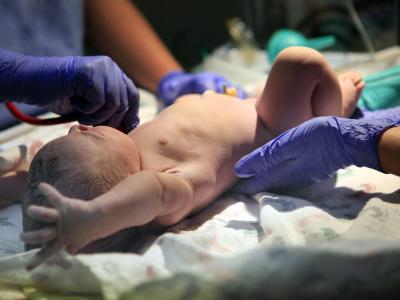Feb 11, 2009
Indonesia reports H5N1 outbreak on Bali
An animal health official on Indonesia's Bali island reported an H5N1 outbreak in chickens in Badung district, which led to the recent culling of 133 birds, the Jakarta Globe reported today. A man who experienced flu-like symptoms after he was exposed to sick birds was treated with oseltamivir and appears to be improving, the report said.
Avian flu hits more poultry in Vietnam, Bangladesh
Vietnamese officials confirmed new outbreaks in Quang Tri, in the central part of the country, and Bac Ninh, in the north, raising the number of provinces reporting outbreaks to seven, Xinhua, China's state news agency, reported today. Meanwhile, livestock officials in Bangladesh reported that the virus struck a commercial poultry farm in Dhaka division, which killed 661 birds and led to the culling of 839 more, according to a report yesterday from the World Organization for Animal Health (OIE).
[Feb 11 Xinhua story]
[Feb 10 OIE report]
China stockpiles its own H5N1 vaccine
China's food and drug administration said today that the country has stockpiled an H5N1 vaccine for humans, Xinhua reported today. Sinovac, based in Beijing,
spent 2 years conducting clinical trials of the vaccine and received approval in April 2008 to begin production. The vaccine, called Panflu, is approved for use in those ages 18 to 60.
[Feb 11 Xinhua story]
[Apr 3, 2008, CIDRAP News story]
WHO confirms Vietnam's recent H5N1 case
The World Health Organization (WHO) today confirmed Vietnam's latest human H5N1 case, a 23-year-old woman from Quang Ninh province who got sick on Jan 28 and was hospitalized on Jan 31, where she remains in serious condition. An investigation found that she had contact with sick and dead poultry before she became ill. Her infection raises Vietnam's H5N1 case count to 108, of which 52 were fatal.
[Feb 11 WHO statement]
Study reveals key avian flu protein needed to
create pandemic strain
A research group, including investigators from the US Centers for Disease Control and Prevention, used human 1918avian H1N1 reassortant influenza viruses to explore the genetic factors that influence airborne transmission. Using ferrets as a model, they found that the 1918 PB2 protein was needed for airborne transmission of a virus expressing the 1918 hemagglutinin and neuraminidase, an adaptation that is critical for an avian flu strain to develop into a pandemic strain. Their findings appear in an early online edition of Proceedings of the National Academy of Sciences (PNAS).
[Feb 11 PNAS abstract]
Army biolab officials say older samples skewed inventory reports
More details emerged yesterday about select agent inventory problems that stopped some research work at the US Army Medical Research Institute of Infectious Diseases (USAMRIID) in
Frederick, Md., the Baltimore Sun reported. Officials discovered 20 vials of a select agent in a freezer box listed as containing only 16 vials. Army officials attribute the inventory problems to older research samples that were stored before the institute computerized its records in 2005, and they said a full inventory could take 3 months.


















